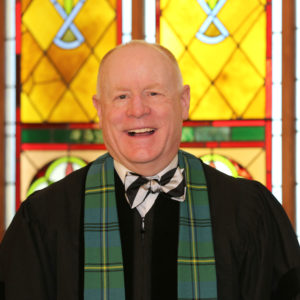We Come to Remember
by Charlie Smith
By the time you read this, I will have run in the Oklahoma City Memorial Half Marathon, my 12th time competing in a race of 13.1 miles. (It still amazes me to write that sentence.) Even if you are not a runner, I encourage you to mark next year’s race on your calendar and attend the early-morning Starting Line ceremony. There, 168 seconds of silence are observed in honor of the victims of the 1995 bombing – a moving experience beyond words that always leaves me in tears. Also, the Memorial’s Mission Statement, captured on the symbolic 9:03 gate facing west, is read: “We come here to remember those who were killed, those who survived, and those changed forever. May all who leave here know the impact of violence. May this memorial offer comfort, strength, peace, hope and serenity.”
The Memorial grounds are my favorite place for training runs. I can’t count the number of times I have read those words aloud (or snapped a selfie at the gate.) Runners will tell you that every race is different, but there are remarkable similarities to each training cycle. In preparation for a half marathon in Austin in February, I began keeping a running journal. It helps me remember and process feelings and ideas, such as the inevitable “Cranky Week” one month out from each race, when everything seems to go wrong and becomes an irritation. The journal has inevitably become more of a diary of my life and not just running. Page after page, I seem to return to the Memorial’s Mission Statement, dissecting it in my mind, word by word.
John Kennedy, a fellow Rotarian, is immediate past chairman of the Oklahoma City Memorial Foundation. Originally, he worked with a panel, made up of bombing survivors and victims’ families, to create the Mission Statement. He has noted the hard work of that group, rising beyond passions of anger, to craft what he calls a statement of hope, not meant for the present moment, but for the future, grounded in hope.
Many of you probably still remember that awful morning well – what you were doing at the time of the explosion. I was working at the time at the Omaha World-Herald newspaper. Upon hearing the news, my first thought was of the staff at The Associated Press, then housed in the basement of the old OPUBCO building at Fourth and Broadway, where I had worked for many years. I imagined the adrenaline, the excitement, of covering such a monumental breaking story, because I used to thrive in that environment. Frankly, I still do. My best days in ministry are those when I’m instinctively acting on many fronts – spinning plates – at the same time. It is a fly-by-the-seat-of-your-pants, making-it-up-as-you-go-along, energetic style that has led one colleague to introduce me to newcomers as somebody who likes to rush into burning buildings.
A central tenet to that way of seeing the world is that life is messy. So here’s a messy, imaginative thought that occurred to me while re-reading the Oklahoma City Memorial Mission Statement: “To create is to destroy.” That is not to magnify in any way the fertilizer-filled truck bomb that blew up the Murrah Federal Building. But let me suggest that that attempt to destroy instead accomplished exactly the opposite: It unleashed a creativity, an energy, a resiliency that has come to be known as the “Oklahoma Standard.” That same idea is encapsulated in the beauty of the words of the Mission Statement, which used the creative imagination of a gathered community to destroy those feelings that weigh down – pessimism, hopelessness, anger – and replaced them with “comfort, strength, peace, hope and serenity.”
“To create is to destroy.” That’s the tag line in a book called Wreck This Journal by Keri Smith. Wreck This Journal offers suggestions and opportunities to literally wreck and damage the pages of the journal in an attempt to break through the creative process. Among its suggestions: Rub a page with dirt; glue, staple or paste pages together (intentionally); tie a string to the journal, take it for a walk and drag it. (I have taken the journal’s guidance so much to heart that I’ve had to buy new copies. The same fate may await my running journal.)
When we learn to get messily creative, as did the Mission Statement Committee and the organizers of the Oklahoma City Memorial, then we can achieve our life’s mission. The first recommendation for launching this creative destruction, according to the author of Wreck This Journal, is to crack the spine. And when we do that, Smith says, “maybe we can begin to live recklessly in a way that engages us where we are rooted and calls us to listen to each other.”
See you at the Starting Line, my friends!


Told from the toad, “the High Road!”
Welcome back to your Old School AP style!